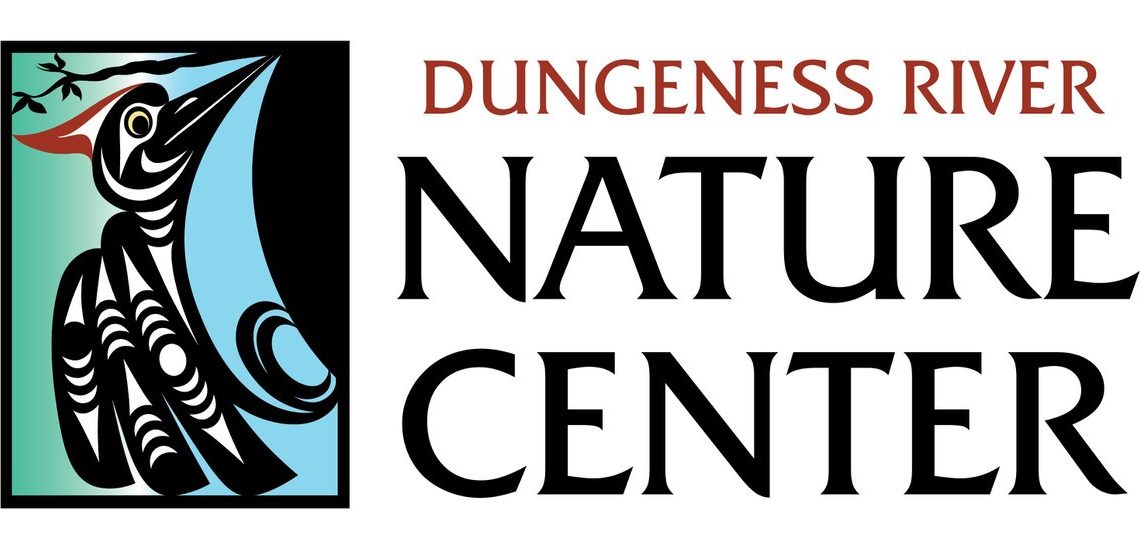
“River Center’s Expansion and Remodel call for changes—a new Mission, Name and Logo”
On September 1st, the Dungeness River Audubon Center will change its name to the “Dungeness River Nature Center.”
The expansion and remodel of the facility is five times larger than the original building at Railroad Bridge Park and will integrate the natural history and the S’Klallam culture of the Olympic Peninsula.
The new name reflects the River Center’s educational mission to teach children and adults about the natural environment of the Dungeness River watershed–from its headwaters in the alpine meadows of the Olympic mountains to its estuary entering the Strait of Juan de Fuca.
The River Center’s partners, Jamestown S’Klallam Tribe, Olympic Peninsula Audubon Society, and the State and National Audubon Societies, support the name change. It was introduced and approved by the Center’s Board of Directors.
“We were prompted to change the name, so people understand that the work we do is to celebrate all natural and cultural resources of the Dungeness River watershed,” says Powell Jones, River Center Director and Park Manager.
“Although we want to continue to be a go-to place for birds, we want visitors to come learn about the Dungeness River’s unique ecosystems and inhabitants that include salmon, mammals, insects, and plants,” Jones says. “Additionally, we want to be a place where people come to learn about the special relationship that the Jamestown Tribe has had with this watershed for time immemorial.”
While “Audubon” has been part of the River Center’s name and logo since 1997, the Jamestown S’Klallam Tribe has been an active partner since 1994. The River Center sits in the 75-acre Railroad Bridge Park, owned by the Tribe. The Tribe provides a full range of maintenance, repair, and Park and Center facilities upgrades; including caring for the historic railroad bridge that crosses the Dungeness River.
“Our Tribe is very excited about this expansion of the Dungeness River Center,” says W. Ron Allen, Jamestown S’Klallam Tribal Chair and CEO. “The new name and logo reflect a turning of the page in this Tribal/community program’s purpose. One that will enlighten many generations about the importance of the river and habitat for fish and wildlife to our community. The Center will truly become a destination site honoring the beauty of the Olympic Peninsula.”
“The Olympic Peninsula Audubon Society will continue to sponsor and present bird-centric programs, field trips, BirdFest, and classes as core components of the Center’s expanded offerings,” says Ken Wiersema, OPAS President. “We have been active partners in the designs and capabilities built into the expanded Center. As an entirely volunteer organization and the smallest of the local partners, we’re energized and ready to get into the Center and do our part. We’re delighted to see the Pileated Woodpecker in Salish art, in the new logo.
While we’ll miss the Audubon name on the Center, the new name represents a more inclusive commitment from each of the partners to the understanding and stewardship of our natural environment. The National Audubon Society and their State office will continue to work in partnership with the Center to achieve our shared goals.”
“Because the River Center covers such a wide range of subjects that include everything from wildflowers, trees, insects, coyotes, hummingbirds, and everything in between; we felt that it was also important for our mission statement to be reworked to include and describe best what we do,” says Jones.
The expanded and remodeled facility includes a 150-person meeting room, small conference/classroom, exhibit room, new office, gift shop, commercial catering kitchen, concession stand, wildlife viewing room, atrium, and a large patio for outdoor activities.
The Tribe bought the land when it became available to expand the River Center facilities.
After five years of a capital campaign that raised more than $5 million to expand and remodel the River Center in Railroad Bridge Park, the new building will open to the public in the Fall.
Coast Salish art, used in the River Center’s new logo, features a pileated woodpecker clinging to the trunk of a substantial tree, head poised to hammer out a new nest.
“The first ‘Sequim Natural History Museum’ was founded by volunteers in 1984 in a single classroom in the old high school building,” says Annette Hanson, current President of the Board and co-founder. “In 1994, our first board members envisioned a place where we could teach about the natural history of our area and the importance of respecting and preserving our wildlife and environment. We wanted to showcase the complexity of the Dungeness River. We imagined and planned for a center where all people could visit, learn, and feel welcome in the beautiful and natural setting of Railroad Bridge Park.
Our vision was big, but we started small in 2001 with the opening of the first River Center building. Fast forward—now the timing is right—our vision is becoming a reality! We are so thankful for our partners, our community, and donors who are helping our shared vision come true. We’re almost there,” says Hanson.


